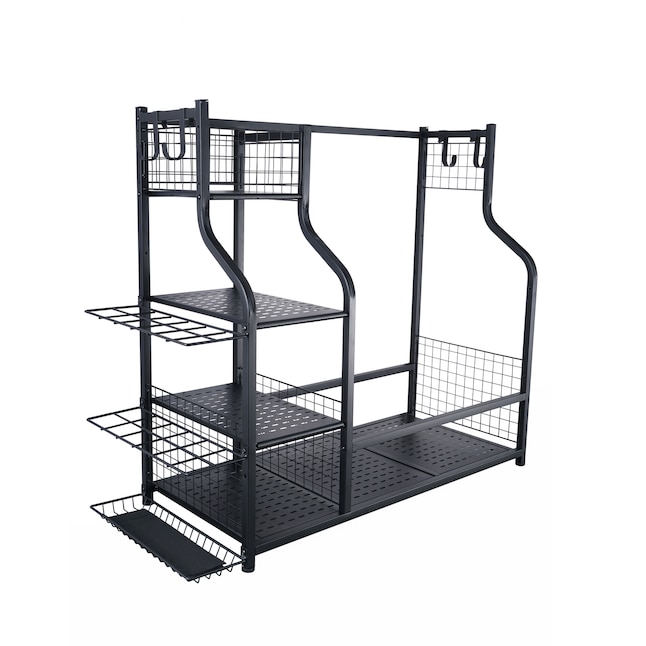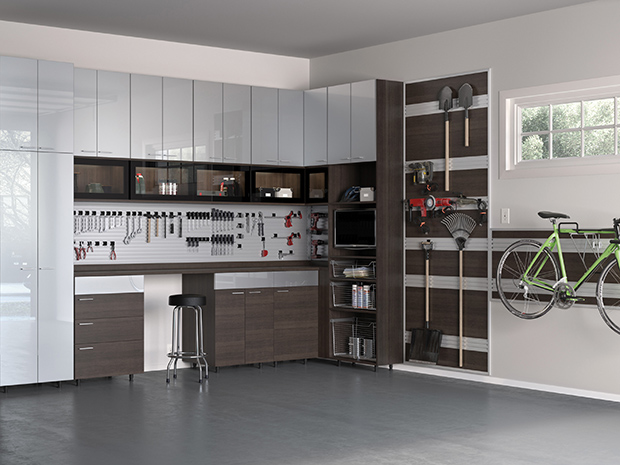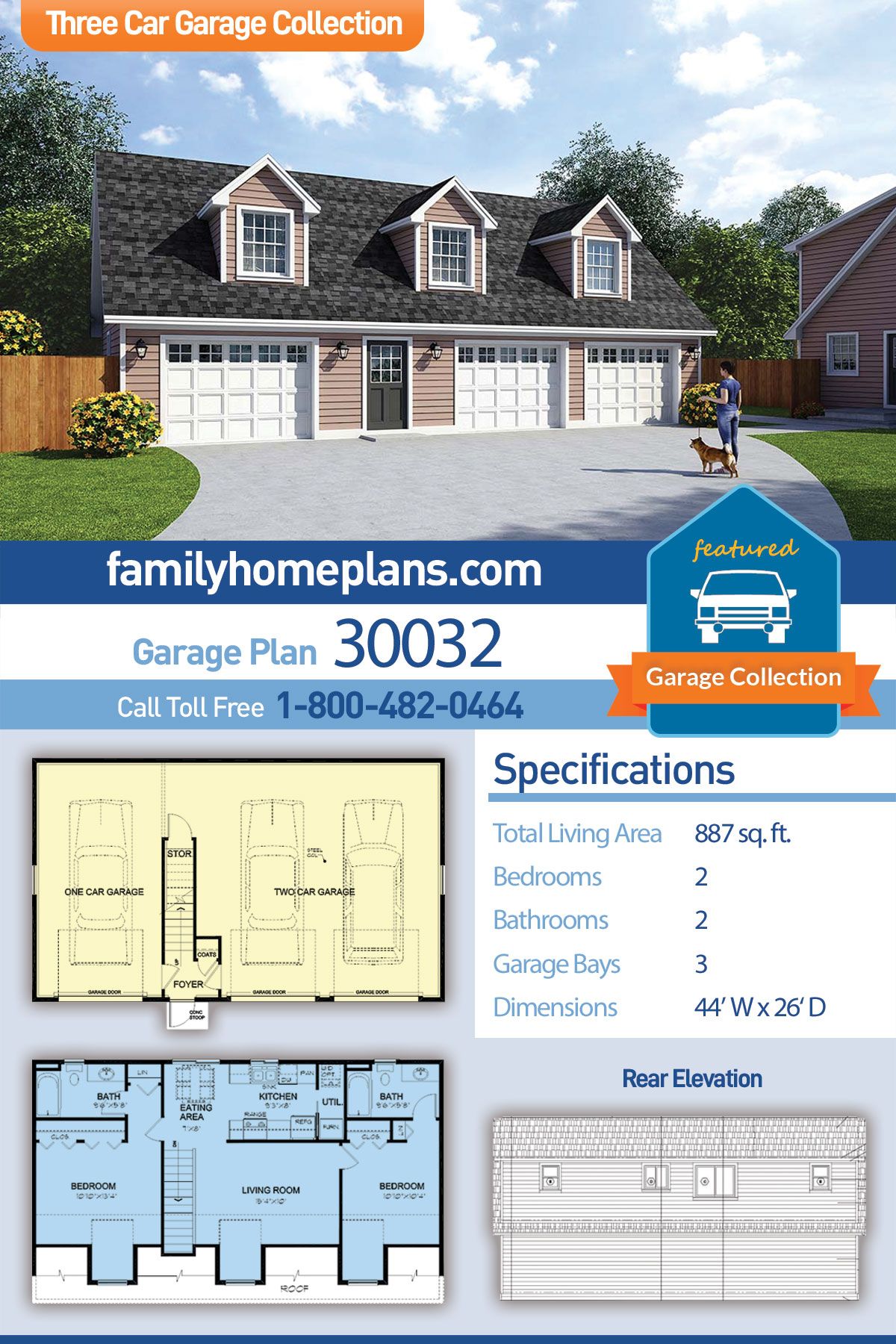
Garage shelving units are available in many shapes and sizes. To get the best out of your garage's space, you need to select a unit that is suitable for your needs and can carry a wide variety of heavy objects. How long your unit lasts will depend on what material was used.
Metal shelves last for a long time. They can be used for industrial work areas or sheds. Most metal shelving has fasteners to keep the shelves in place. They are also rust-proof, making them easy to clean. All-purpose cleaners work well for metal shelving.
Wooden shelves look great in your workspace. You can make these shelves from many different types of wood including pine, maple, or oak. These woods also have a high level of durability.

Plastic shelving is another material that is common, but it can be warped under extreme loads. Although plastic shelving can be quite inexpensive, it is ideal for light-duty storage. You should use metal or steel shelving for heavier loads.
A freestanding or mounted unit will work best depending on what you are looking to store in your garage. Mounted shelving can be attached on the ceiling or wall, while freestanding models are mounted on wheels. You can arrange your items horizontally or vertically with both types of shelving. You can also get a retractable lift to support your shelving.
Wire shelving can be sturdy but is light. This type of garage shelving can support weights up to 4,000 pounds. There are many colors and sizes available. There are even tool-specific corner shelf designs to make your workspace easier to access.
The freestanding units are quick and easy to assemble. These units take up space, so be careful. If you plan to store heavy or large items, a hanging rack might be a better option. A hanging rack or overhead rack can help maximize storage space.

Gracious Living offers resin-coated garage shelving for those who are tight on budget. It is cost-effective, easy to assemble, durable, and can withstand any wear and tear. It's lightweight makes it easy for people to carry around. To make a longer unit, you can connect the shelves together.
Another option is to make your garage shelving units. You can also use old cabinets as a base for your new unit. You can also get brackets or shelves from major manufacturers. Many companies include instructions for installation. A shelf can be installed anywhere from two feet to eight feet, depending on the size of your garage.
Installing garage shelving units requires tools. You must also regularly clean your shelving. You may have to clean your shelving more often than you would a cardboard box depending on its contents.
FAQ
How much is it to renovate and gut a whole kitchen?
If you've been thinking about starting a renovation project for your home, you may wonder how much it would cost.
The average kitchen renovation cost is between $10,000-$15,000. There are ways to save on your kitchen remodel while still improving the space's look and feel.
Preparing ahead can help you cut down on your costs. This includes choosing a style and color scheme that suits your lifestyle and finances.
Hiring an experienced contractor is another way of cutting costs. A professional tradesman knows exactly how to handle each step of the construction process, which means he or she won't waste time trying to figure out how to complete a task.
It would be best to consider whether you want to replace or keep your existing appliances. The cost of replacing appliances can increase by thousands of dollars in a kitchen remodel project.
You might also consider buying used appliances over new ones. Because you don't need to pay for installation, buying used appliances can help you save some money.
You can also save money by shopping around when buying materials and fixtures. Many stores offer discounts for special occasions like Cyber Monday or Black Friday.
What would it cost for a home to be gutted versus what it would cost to build one?
A home gutting involves the removal of all interior items, including walls, floors ceilings, plumbing and electrical wiring, fixtures, appliances, and fixtures. It's usually done when you're moving into a new place and want to make some changes before you move in. Gutting a home is typically very expensive because so many things are involved in doing this work. The average cost to gut home ranges from $10,000 to $20,000, depending on your job.
Building a home is where a builder builds a house frame by frame, then adds walls, flooring, roofing, windows, doors, cabinets, countertops, bathrooms, etc. This is usually done after buying a lot of lands. Building a home is typically cheaper than renovating, and usually costs between $15,000-30,000.
It all depends on what you plan to do with your space. You'll likely need to spend more money if you want to gut a property. But if your goal is to build a house, you won't need to disassemble everything and redo everything. Instead of waiting for someone else, you can build it how you want.
What is the difference in a remodel and a renovaton?
Remodeling is making major changes to a particular room or area of a given room. A renovation refers to minor changes made to a particular room or area of a given room. Remodeling a bathroom is a major job, but adding a faucet to the sink is a minor one.
A remodel involves replacing an entire room or part of a whole room. A renovation is only changing something about a room or a part. A kitchen remodel could include replacing countertops, sinks and appliances as well as changing lighting and paint colors. You could also update your kitchen by painting the walls, or installing new light fixtures.
Do you think it is cheaper to remodel a kitchen or a bathroom?
Remodeling a kitchen or bathroom is a costly undertaking. It may make more sense to spend money on home improvements, considering how much you pay in energy bills each month.
It is possible to save thousands every year with a simple upgrade. Simple improvements such as insulation of walls and ceilings can lower heating and cooling costs up to 30 percent. Even a small addition can increase comfort and resale values.
The most important thing to keep in mind when planning for renovations is to choose products that are durable and easy to maintain. Materials like porcelain tile, solid wood flooring, and stainless-steel appliances will last longer and need fewer repairs than vinyl countertops.
You might find that upgrading to newer fixtures can cut down on utility costs. Low-flow showerheads or faucets can help reduce water usage by up 50 percent. Compact fluorescent bulbs can be replaced with inefficient lighting to reduce electricity consumption by as much as 75 percent.
Are you able to spend $30000 on a kitchen renovation?
You can expect to pay anywhere from $15000-$35000 for a kitchen overhaul, depending on how much money you have available. A complete kitchen remodel will cost you more than $20,000. If you are looking to upgrade appliances, paint or replace countertops, it is possible to do this for less than $3000.
The average price for a full-scale renovation is usually between $12,000-$25,000. There are ways to save money but not sacrifice quality. A new sink can be installed instead of replacing an older one. This will cost you approximately $1000. A second option is to buy used appliances at half their cost.
Kitchen renovations are more time-consuming than other types of projects. Plan accordingly. It is not a good idea to begin work in your kitchen and realize that you will run out of time.
The best thing is to get going early. Start looking at options and collecting quotes from various contractors. Then narrow down your choices based on price, quality, and availability.
Once you've found a few potential contractors, ask for estimates and compare prices. It's not always the best option to go with the lowest price. It's important to find someone with similar work experience who will provide a detailed estimate.
When calculating the final cost, remember to add all extras. These could include labor costs, permits, and material charges. You should be realistic about what you can spend and stick to your spending budget.
If you're unhappy with any of the bids, be honest. Tell the contractor why you don't like the initial quote and offer another chance. Don't let pride stand in the way of saving money.
What are the main components of a full kitchen renovation?
A kitchen remodel includes more than a new faucet and sink. There are also cabinets, countertops, appliances, lighting fixtures, flooring, plumbing fixtures, and much more.
A full kitchen remodel allows homeowners to update their kitchens without having to do any major construction. This means that no demolition is required, making the project easier for both the homeowner and the contractor.
A kitchen renovation can include a variety of services such as plumbing, HVAC, painting, drywall installation, and electrical. Depending on how extensive your kitchen renovation is, you may need multiple contractors.
Professionals with years of experience working together are the best way ensure a successful kitchen remodel. Many moving parts can cause delays in kitchen remodels. If you choose a DIY approach, make sure you plan and have a backup plan in place in case things go wrong.
Statistics
- Attic or basement 10 – 15% (rocketmortgage.com)
- $320,976Additional home value: $152,996Return on investment: 48%Mid-range average cost: $156,741Additional home value: $85,672Return on investment: (rocketmortgage.com)
- 57%Low-end average cost: $26,214Additional home value: $18,927Return on investment: (rocketmortgage.com)
- Windows 3 – 4% Patio or backyard 2 – 5% (rocketmortgage.com)
- Following the effects of COVID-19, homeowners spent 48% less on their renovation costs than before the pandemic 1 2 (rocketmortgage.com)
External Links
How To
How to Install Porch Flooring
It is very simple to install porch flooring, but it will require planning and preparation. Before installing porch flooring, you should lay a concrete slab. A plywood deck board can be used in place of a concrete slab if you do have limited access. This allows you to install your porch flooring without spending a lot of money on a concrete slab.
The first step when installing porch flooring is to secure the subfloor (the plywood). You will need to measure the porch's width and cut two strips of plywood equal to it. These strips should be placed along both sides of the porch. Next, nail them into place and attach them to the walls.
Once you have secured the subfloor, you will need to prepare the space where you want to install the porch flooring. This typically involves cutting the top layer of floorboards to the desired size. Then, you must apply a finish to the porch flooring. Polyurethane is the most common finish. You can stain your porch flooring. Staining is more straightforward than applying a coat of clear paint. After applying the final coat, you just need to sand down the stained areas.
After completing these tasks, it's time to install your porch flooring. Next, mark the spot for your porch flooring. Next, cut the porch flooring to size. Finally, set the porch flooring in place and fasten it using nails.
If you need to give your porch more stability, porch stairs can be installed. Porch stairways are typically made of hardwood. Some people prefer to have their porch stairs installed before their porch flooring.
Once you have installed your porch flooring, it is time to complete the project. You must first remove your porch flooring and install a new one. You'll need to clean up the debris. Be sure to remove all dirt and dust from your home.